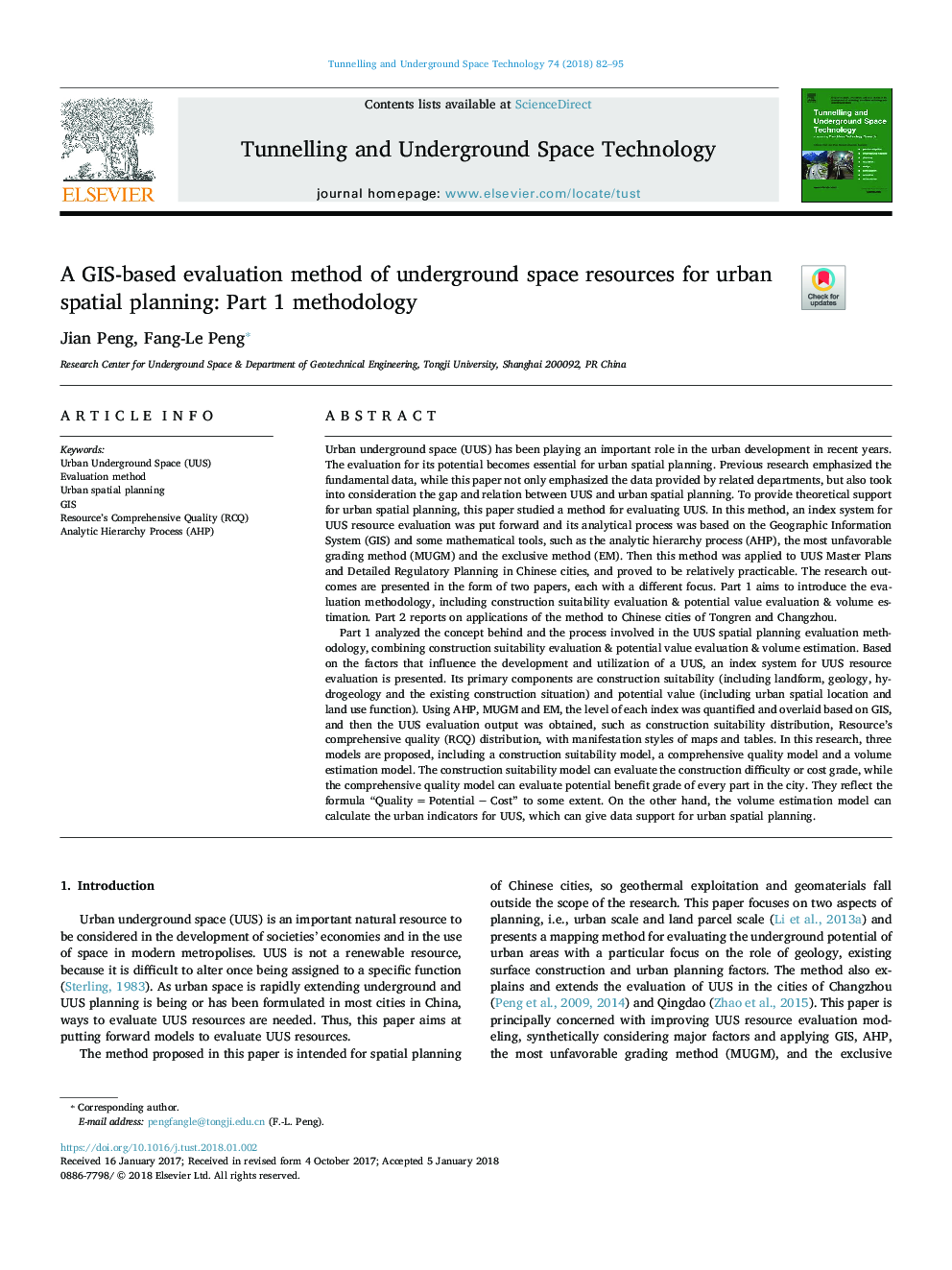| Article ID | Journal | Published Year | Pages | File Type |
|---|---|---|---|---|
| 6782621 | Tunnelling and Underground Space Technology | 2018 | 14 Pages |
Abstract
Part 1 analyzed the concept behind and the process involved in the UUS spatial planning evaluation methodology, combining construction suitability evaluation & potential value evaluation & volume estimation. Based on the factors that influence the development and utilization of a UUS, an index system for UUS resource evaluation is presented. Its primary components are construction suitability (including landform, geology, hydrogeology and the existing construction situation) and potential value (including urban spatial location and land use function). Using AHP, MUGM and EM, the level of each index was quantified and overlaid based on GIS, and then the UUS evaluation output was obtained, such as construction suitability distribution, Resource's comprehensive quality (RCQ) distribution, with manifestation styles of maps and tables. In this research, three models are proposed, including a construction suitability model, a comprehensive quality model and a volume estimation model. The construction suitability model can evaluate the construction difficulty or cost grade, while the comprehensive quality model can evaluate potential benefit grade of every part in the city. They reflect the formula “Qualityâ¯=â¯Potentialâ¯ââ¯Cost” to some extent. On the other hand, the volume estimation model can calculate the urban indicators for UUS, which can give data support for urban spatial planning.
Related Topics
Physical Sciences and Engineering
Earth and Planetary Sciences
Geotechnical Engineering and Engineering Geology
Authors
Jian Peng, Fang-Le Peng,
